
Original Link: https://www.anandtech.com/show/2142
As a result of the recent rush to 10 megapixel digital SLR cameras, everything that has been held sacred in the camera business is now upside down. At the price of yesterday's 6 megapixel cameras you can now buy almost twice the resolution - and you can definitely see the difference in pictures taken at 6 and 10 megapixels. The $1700 Nikon D200 is now mostly the same feature set and virtually the same 10 megapixel sensor as the new $999 Nikon D80, and the $800 Canon Rebel XTi has almost the same processing engine as the $1500 Canon 30D and a 10 megapixel resolution compared to the 8 megapixel of the 30D. Since so much has progressed so fast in the last few months, it is time for a hard look at what is available in the hottest digital camera segment - digital SLRs.
The new "entry" level digital SLR market, generally defined as digital SLR cameras that sell for $1000 or less, has certainly expanded at both the bottom and the top. Today you can actually buy a digital SLR camera in the $400 to $500 price range, which was unheard of as recently as last year's Holiday buying season. This lower entry price has practically made the popular fixed lens SLR and "quality" pocket digital cameras all but obsolete. Why pay $800 for a fixed lens digital when you can get more features and flexibility with an interchangeable lens digital SLR at a lower price? This "prosumer" category of the past is rapidly disappearing, but it is worth pointing out that there is always room for a high-quality, pocketable fixed-lens digital camera.
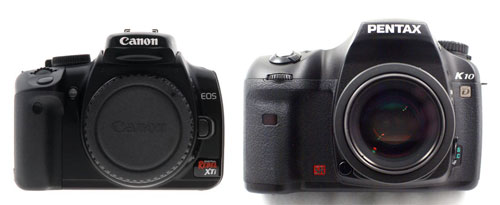
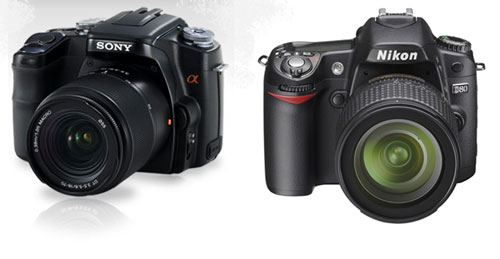
The $1000 and under segment, which used to be entry level SLR cameras, now includes10 megapixel models at the top, and the feature sets for this new generation include enhancements previously available only on much more expensive cameras. All of the 10 megapixel SLRs are faster than their predecessors - borrowing processing engines from higher priced models (Nikon and Canon) or pioneering new high-speed processing circuits (Pentax and Sony).
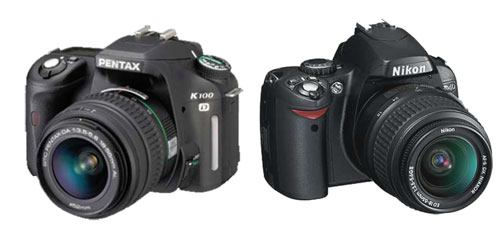
The "entry" market is now segmented into true entry level SLR cameras in the $400 to $600 price range, the new 10 megapixel mid-range SLRs at $700 to $1000, and a couple of mid-range 8 megapixel SLRs that straddle the middle in the $600 to $700 range. In practical terms it is very difficult to tell any difference between 6 and 8 megapixel images, or between 8 megapixel and 10. However, there is a discernable improvement in moving from 6 to 10 megapixels.
This SLR Buyer's Guide will take a closer look at the top of this range, comparing the new 10 megapixel models. We will also compare models in the true entry level $400 to $600 range. The 8 megapixel models will be considered at both ends of the spectrum for features and value. Prices quoted in this guide are based on the best prices we could find at major online retailers like Newegg or Amazon. These are also typical prices in our own price engine. The prices quoted should be available to any online shopper, but you may find even better prices if you are willing to do more searching. Conversely, local photo specialty retailers normally provide better customer support and return options than etailers, and their prices for the same item will generally be higher.
If you are shopping for a digital camera but you're not really a photo hobbyist, you might want to start with our overview of digital photography in Digital Photography from 20,000 Feet. In that introduction we cover the terms and concepts used in this Buyer's Guide. If you're a photo hobbyist then dive in. Our advice is not jaded, and many will be surprised that Nikon and Canon were not our first choices in every category. 2006 was definitely the year of the Digital SLR camera, and the names that are new or that resurfaced this year are definitely making shopping for a new Digital SLR more fun than it has been in a very long time.
10 Megapixel SLRs
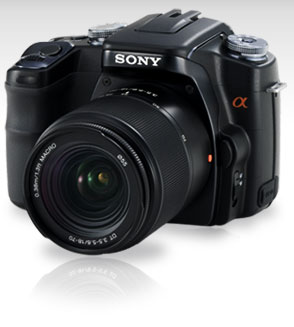
The Sony A100 pioneered the 10 megapixel market when it was introduced this past summer. Sony acquired Minolta and based the new A100 on the entry level Minolta Maxxum 5D.
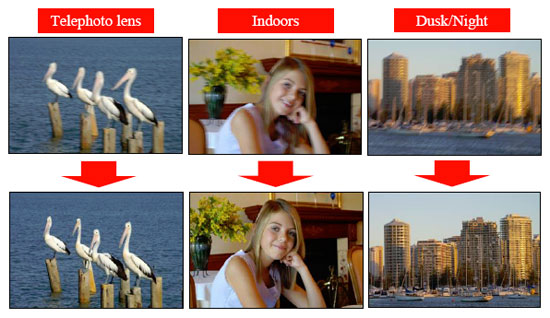
Sony continued the then-unique in-camera image stabilization pioneered by Minolta, which allowed any lens mounted on the camera to take sharper pictures at slower shutter speeds. Olympus had pioneered a popular feature that placed the sensor behind an antistatic protector, and that shook any stray dust off the sensor when the camera was turned on or shut down. Sony added a similar feature to their revision of the Maxxum digital SLR.
Sony inherited and continued the Minolta Maxxum autofocus lens mount, which meant almost any Minolta Maxxum lens ever made would work perfectly on the new Sony SLR camera. The A100 shocked the digital SLR market, since it brought the 10 megapixel resolution to market at a 6 megapixel price. This was also reflected in the selection of the Sony A100 as "Camera of the Year 2006" by the largest photo specialty magazine.
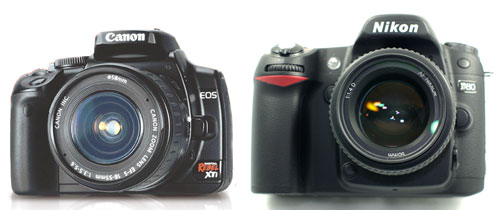
Canon and Nikon dominate the serious photography market, so it was no surprise that both followed in Sony's footsteps a couple of months later with their own 10 megapixel models. The Nikon D80 borrowed the processing engine, fast focusing module, and 10 megapixel sensor from their successful but expensive D200 model. All of the current 10 megapixel SLR cameras - except Canon - are based on the Sony 10 megapixel sensor. Nikon would point out, however, that the sensor interface and image processing "hardware" are their own design, and that the interface and processing account for much of how the sensor actually performs.
Canon basically increased the resolution of their CMOS sensor used in the 8 megapixel Rebel XT to 10 megapixels, and dubbed the revised camera the Canon Rebel XTi. They did incorporate the improved image processing guts of their semi-PRO 30D and finally added their own dust removal system - much like the one pioneered by Olympus. Canon also added dust removal capabilities to their bundled image-editing software.
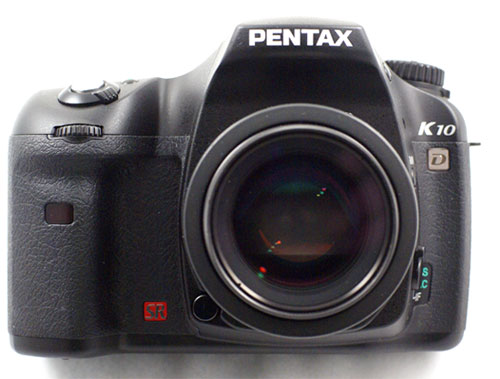
The latest 10 megapixel SLR is the long-awaited Pentax K10D. Pentax took longest to get their 10 megapixel Sony sensor model to market, but the time certainly was not wasted. In many ways the Pentax is the most professional and full-featured of the 10 megapixel choices, since it incorporates special sealing for dust and moisture protection, similar to the sealing of the top professional SLR models. Pentax also refined the "in-camera" anti-shake pioneered by Minolta/Sony by adding permanent magnets in both horizontal and vertical planes. This allows rotation in the diagonal as well as horizontal/vertical planes and is claimed to extend low-light shooting up to four full f-stops.
Pentax also brought over their innovative hyper-program feature from top Pentax cameras of the past. This allows users to keep the camera on program and adjust either aperture or shutter speed to what they want in a shot. The program compensates by adjusting the other program variables automatically. Pentax added "ISO Priority" to the typical SLR offerings of full program (green zone), program, aperture-priority, shutter-priority, and full manual. This seemed a natural extension of one of the Digital SLR's best features - built-in film (Sensor) with very wide sensitivity (ISO). To top it off Pentax made sure the new K10D, and lower-priced K100D and K110D, would be fully compatible with any K-mount lens ever produced, including excellent "focus-assist" features for non AF lenses and the ability to manually dial in info from very old lenses that can still benefit from Pentax lens stabilization.
These four cameras are loaded with features and represent the current crop of 10 megapixel offerings. Samsung has also announced they will be marketing a 10 megapixel model just after the holidays which is to be called the Samsung GX-10. The new Samsung model is basically a relabeled Pentax with the same feature set.
10 Megapixel SLRs Compared
In items as complex as a camera, different buyers find different features important to their needs. For that reason we will attempt to look at areas that are typically important to some buyers and compare the four cameras in that area.
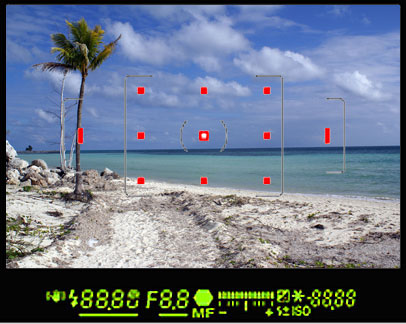
Pentax K10D
VIEWFINDER: The Pentax has the best viewfinder, followed closely by the Nikon D80, then the Sony A100. The Sony viewfinder is remarkable for a penta-mirror setup, but it is no match for the true pentaprisms in the Nikon and Pentax. The Canon is by far the worst of the lot in viewfinders. Best in this case is measured by brightness of the screen image, ease of seeing the entire screen, and "natural perspective". If you want to see a mediocre viewfinder for comparison take a look at the Olympus E500 which makes the user feel like they are looking down a tunnel.
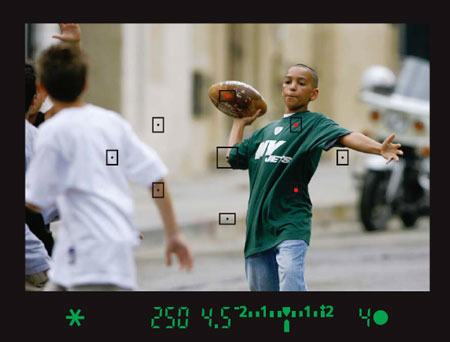
Canon Rebel XTi
VIEWFINDEER FEATURES: All of the 10 megapixel SLRs have adjustable diopters for dialing in a mild correction for shooting without glasses. The Pentax is the only camera in the group to also offer interchangeable focusing screens.
POWER OPTIONS: The Pentax K10D, Nikon D80, and Canon XTi all offer optional battery grips for providing more power and options for vertical shooting. The Sony A100 does not offer this feature. All four models use proprietary Lithium-Ion batteries that can provide 800 exposures or more before recharge, and the battery charger is included in the retail package. Canon reduced the size and capacity of the XTi battery, which may affect the number of shots between charges compared to the 8 megapixel XT model. The Sony A100 uses a new battery type that is not interchangeable with earlier Maxxum digital camera batteries. Oddly enough, the Pentax K10D turns out to use the same NP400 battery that powered the last Minolta Digital SLRs like the Maxxum 5D, so your spare Maxxum batteries will work in the new Pentax K10D. The Nikon D80 remains a proprietary design that refines and extends the capabilities of batteries used in the D70 and D70s.
ANTI-SHAKE: Minolta pioneered anti-shake built into the camera body, which allowed shooting at slower shutter speeds with any lens attached to the camera. Sony refined and improved the feature. Pentax also has added an anti-shake program that is even more sophisticated than the one used by Sony. Both Canon and Nikon have special lenses with anti-shake motors, but they are very expensive, and anti-shake only works with those lenses.
COMPATABILITY: Nikon and Canon are the brands that most often come to mind when you think of professional photography. They both have large lens lines that work on their cameras. The new Sony uses the Minolta Maxxum lens mount and can mount and work with almost any of the 18 million Maxxum mount lenses sold in the last 20+ years. The Pentax K10D has full functionality with any autofocus K-mount lens, and these lenses have been manufactured for many years. In addition Pentax has special focus assist for ANY Pentax K-mount lens ever produced - which now total about 25 million lenses. You can even use older screw-mount Pentax lenses in manual mode with a screw-to-K-mount adapter
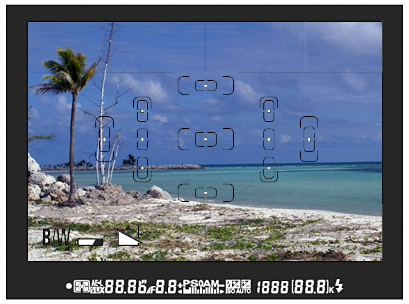
Nikon D80
AUTOFOCUS: All cameras were compared using a 50f1.4 lens, since the shallow depth of field evened the focusing playing field for all cameras. All four 10 megapixel cameras were very fast in focusing and locking on the same subjects - much better than older models like the Pentax *ist D or the original 6 megapixel Canon Digital Rebel. Focusing noise was lowest for the Canon, but it was only very slightly quieter than the Nikon D80 (with a 50f1.4D) and Pentax K10D (50f1.4 FA) which were virtually tied. The Sony was just as fast in focusing, but noisier than the other cameras with a Minolta 50f1.4 lens. Perhaps the Sony would be quieter with the reworked Sony 50f1.4 if anyone could find it and they are willing to pay the new $350 cost Sony is asking. However, this was as fair as we could make it with the 50f1.4 lenses we had available.
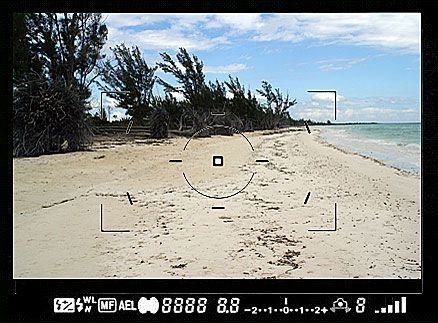
Sony A100
FOCUS MODULE: All four 10 megapixel SLRs use some of the most capable focusing modules available from each manufacturer. There are, however, some differences in technical specifications and functionality. The Pentax K10D uses an 11-point focusing system, Nikon also uses an 11 point focusing array with a layout similar to the Pentax K10D, Sony uses an 8-point array, and Canon uses their 9 point focus array that is apparently borrowed from the 30D. The number of points is only part of the story, however, since most manufacturers use the more sensitive cross array for the center point only. The Cross point is sensitive to both vertical and horizontal detail where the single point is sensitive to just one direction. Pentax says they use 9 cross points in their focusing module.
10 Megapixel SLRs Compared (continued)
HIGH ISO NOISE: From brief comparisons the Pentax and Canon XTi are the best at controlling noise at high ISO ("film") speeds. However, they approach noise reduction in very different manners. The Pentax retains edge sharpness, dynamic range and contrast at high ISO but allows the background to become grainier; the Canon reduces edge sharpness, contrast, and dynamic range to make noise less noticeable at high ISO. Since dynamic range - the range from lightest to darkest - is already a problem with all digital photography we prefer noise control that preserves the already limited dynamic range as much as possible, but some will prefer the Canon approach. Both are followed closely by the Nikon, with the Sony exhibiting the most noise at high ISO. All four are all but identical to ISO 400, but at 800 small differences start to appear. It is worth noting that while the Pentax and the Canon sensors/processors control noise well they are not as "noise-free" as the Canon 6 megapixel and 8 megapixel CMOS sensors. This should not really be a surprise since the size of the sensor is the same APS C size in the 6, 8, and 10 megapixel versions. More pixels in the same area therefore translates into a bit more noise.
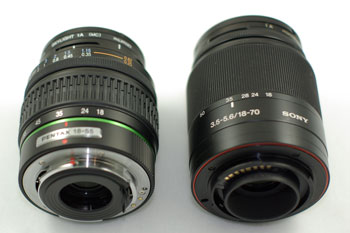
KIT LENS: While you can always upgrade to a better lens, the kit lenses that are normally packaged with the SLR are normally very good value for your money. The bare entry level lens for the Canon, Nikon, and Pentax SLRs is an 18-55mm, which is equivalent to a 28mm to 80mm lens on a traditional 35mm camera. The Sony normal lens is 18-70mm, adds the same cost to the kit as the others, but is equivalent to a 28-105mm lens for 35mm. Build quality is usually cheap on kit lenses, but the above picture compares the Sony and Pentax kit lenses. It is worth pointing out that the Pentax 18-55mm is the only kit lens with a metal lens mount as normally seen on "better" lenses - the others all have a plastic lens mount. Nikon actually has two other kit lenses in the 18-70mm and 18-135mm lenses, but these "kit" lenses add as much as $300 to the kit total, compared to an average $100 or less for the other kit lenses.
BUILD QUALITY: By far, the Pentax K10D feels the most solid and it is the heaviest of the four cameras. That can be good (build quality) or bad (increased weight) depending on your desires. The Nikon D80 is a very solid piece of equipment and is the easy number 2, followed closely by the also solid Sony A100. The extra sealing for water/dust resistance pays off in the K10D, which is easily the best quality Pentax since the *ist D, which also had a solid build quality. The Nikon and Sony build quality are about the same, except for the Sony's loud slapping mirror and louder focusing. The Canon is far behind the other three in build quality, but it still has the quietest lenses of the group with the integrated lens focusing motors. The damped mirror sound on the Pentax is very reassuring to most ears.
FLASH: Nikon and Sony (inherited from Minolta) both provide excellent distance integration in their flash offering. With Nikon D and Sony/Maxxum ADI lenses, flash photography is accurate and predictable. Pentax and Canon also have good built-in flashes and external flash units, but they are not quite the equal of the D offerings. Nikon has reasonable pricing for flashes, but Sony decided to make their Sony/Minolta flash units very expensive.
LCD(s): All four 10 megapixel cameras offer large 2.5" color preview screens. The Sony and Canon also use the screen for menus, while the Pentax and Nikon have a separate top-deck LCD that provides info on camera settings.
CONTROL: The Pentax Hyperprogram has been around for quite a while, and Pentax did a really great job with the front/rear dials and new sensitivity program line. The Nikon D80 also has both front and rear control dials, while the Sony and Canon have just one control dial. The ability of the Pentax to shift the program aperture with one dial and the shutter speed with the other while the camera is still in program mode makes shooting like you want a lot easier - the creative control of manual while still in program mode.
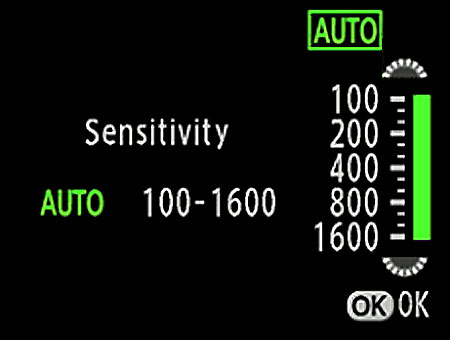
AUTO ISO: Both the Pentax and Nikon offer user selectable Auto ISO ranges - a really useful feature where the camera automatically selects "speed" based on program conditions you can manually set. Sony also offers Auto ISO, but it is limited to ISO 400 and it is not user programmable. The K10D capabilities with a manual, non-autofocus K-mount lens are icing on the cake - you can even use effective anti-shake with manual lenses after dialing in the focal length. Newer lenses automatically provide the focal length info to the camera.
PRICE: Amazon and Newegg were used to determine online prices. These prices should be available to any online shopper, but you may find even better prices if you are willing to do more searching. Conversely, local photo specialty retailers normally provide better customer support and return options than etailers, and their prices for the same item will generally be higher due to the extra service they provide. Right now the Sony A100 is the best value available with a price with 18-70mm lens of about $720. The Canon XTi is selling for about $800 with an 18-55mm lens. The moisture and dust sealed Pentax K10D with a quality 18-55 lens is $999, and the Nikon D80 with an 18-55 lens is about $1100.
Recommendations
All-in-all the Nikon D80 and Pentax K10D are the closest in build quality and depth of features. When you consider the K10D has very effective anti-shake built in, effective moisture sealing, and dust removal - and the Nikon has none of these features - the advantage definitely goes to Pentax. If you are a serious photographer you will be very happy with the Pentax K10D. If you are already committed to the Canon or Nikon lens system, then your choice is easier. However, while Canon pioneered the under $1000 digital camera market, the Canon Rebel XTi is by far the worst offering in the 10 megapixel range. It is cheaply built with poor ergonomics compared to other 10 megapixel offerings.
The Sony A100 is by far the best buy in the 10 megapixel group. Sony has reduced the suggested retail price for the kit to $899 - the same as the Canon Rebel XTi with lens. However, you can actually buy the Sony A100 for a lot less. At $720 the A100 offers a longer 18-70 lens, excellent build quality, anti-shake for any lens, compatibility with new Sony lenses and most any Minolta Maxxum lens, enhanced dynamic range, and fast operation.
Entry-Level Digital SLRs
If $720 is still too rich for an interchangeable lens digital SLR there is still good news for buyers. Since 10 megapixel cameras have launched, the entry SLR is now 6 megapixels.
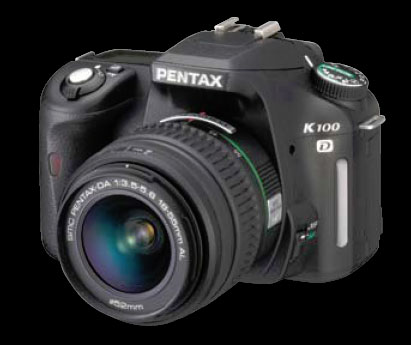
You can find the Pentax K110D with the 18-55mm lens with metal mount for around $400 for the kit after rebate. For more money you can buy the new Nikon D40 for about $600 with lens, or the Pentax K100D with body-integral anti-shake for about $510. There is even more good news in that these new low-priced entry SLR camera kits are much faster than the models they replace. In fact the Nikon and Pentax models use image processing systems similar to their 10 megapixel models. You can also find closeouts of earlier 6 megapixel models, and the savings you find will likely be substantial. Just keep in mind that the older models are often slower and have fewer features than the newer models that replaced them.
A particularly excellent buy in the entry level is the new Pentax K100D. With the Sony purchase of Minolta the entry level Maxxum 5D was discontinued and it was the only entry level SLR with body integral anti-shake. Now that Pentax has developed their own integrated ant-shake the Pentax K100D is the only entry model with built-in anti-shake that will work with any lens you can mount. Since entry SLR buyers often get just the kit lens the anti-shake really matters as it makes the most difference with slower zoom lenses like you always find included as the kit lens.
The K100D is also much faster in operation than the *ist models it replaced. Significantly, you still get 11 point autofocusing with 9 cross sensors even on the $510 K100D, ISO range to 3200 with user programmable auto ISO, and you also get a 2.5" rear LCD and top LCD like the top-line K10D. The only negative, which will be a positive for some, is that the camera uses four AA batteries instead of a rechargeable lithium-ion battery. The good news is you can find AA batteries - disposable, rechargeable, NiMH - almost anywhere, even in rural areas off the beaten track. The bad news is that the battery life with alkalines is horrible, about 100 shots in our testing. You get much better life with high-capacity rechargeable batteries, four AA or two CRV3. Users report battery life with high-capacity rechargeables that is comparable to Li-Ion with other cameras.
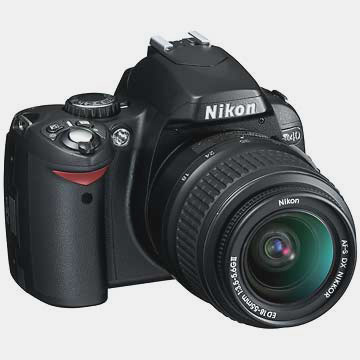
The Nikon D40 is a significant upgrade to the D50 it replaced, with a larger LCD and faster operation. However, like all the other entry SLRs you get a dimmer penta mirror instead of a brighter pentaprism viewfinder. All of the Canon Rebel cameras have used penta-mirrors instead and they have improved over time. Casual users will not likely notice the dimmer viewfinder. The D40 has just three autofocus sensors, but they are spread wide for broad AF coverage. There is no means to auto-clean the sensor and anti-shake requires dedicated and expensive lenses - a stretch for most budget buyers. If you already have Nikon autofocus lenses, however, the D40 is an easy recommendation. It is a fast and capable entry SLR.
With 10 megapixels at the top, two models at 8 megapixel resolution are also selling in the $600 range with a kit lens. The Canon Rebel XT is still an excellent performer and a real bargain at the new $600 price. It is a bit slower than the XTi, but it still provides an excellent 7-point autofocus module. The Canon 8 megapixel CMOS sensor is still the lowest noise sensor in the market, so photo quality is excellent.
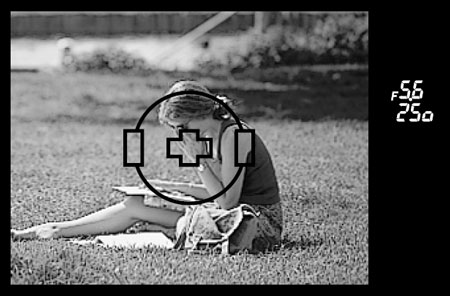
Olympus E500
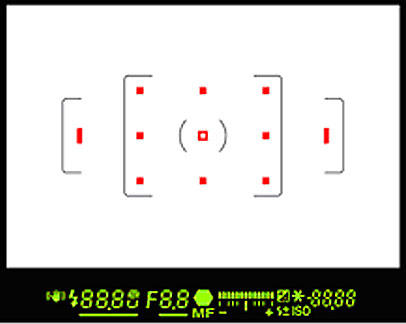
Pentax K100D/K110D
The Olympus E-500 is an 8 megapixel SLR that also sells for about $600 with the normal kit lens. The viewfinder is one of the worst we have seen - mainly because of the difficulty of building a viewfinder for the 2X multiplier of the 4/3 Olympus lens system. Olympus has also placed a pretty low priority on autofocusing sophistication. As you can see above, the 3-sensor E-500 autofocus looks rather crude beside the 11-point Pentax SAFOX AF available at the same selling price. The photo quality of the Olympus, however, is excellent as long as you don't need high ISO, and Olympus pioneered auto sensor cleaning. If you decide to go Olympus be sure to buy the 2-lens kit at just $100 more. It is an excellent value you will fully appreciate after shopping for other 4/3 mount lenses. They are generally hard to find and most are very expensive compared to offerings from the competition.
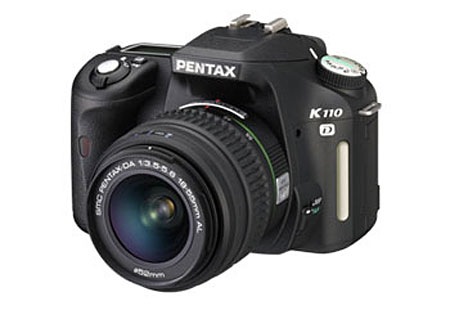
There is only one model, and a rebadged sister, available at the very bottom of the entry level market. For around $400 (after the current Pentax $50 rebate) you can buy a Pentax K110D with an 18-55mm lens (or the sister Samsung GX-1L without a rebate). It would be a mistake, however, to dismiss the K110D as basic since it is the exact same camera as the K100D without the anti-shake capabilities. That means you still get the fast 11-pont Pentax AF module and the speedier processing engine used in the K100D. The kit lens is also better build quality than you will get anywhere else for an entry SLR.
Recommendations
Pentax has some really impressive offerings at the bottom of the entry level market. The K100D is the only entry level Digital SLR with body-integral anti-shake. Since the standard kit lens is a slow zoom lens with entry level cameras, anti-shake means you can shoot sharp pictures in lower light with the Pentax K100D. The anti-shake ability also does double-duty for auto-sensor cleaning.
If you already have Canon lenses or prefer the Canon system, the Canon XT is an excellent choice at the new kit price of $600. It was a great buy at the old $900 price, and an even better buy at 2/3 the original price.
The absolute best buy in entry level digital SLRs is the Pentax K110D with the kit lens. For $400 after the current $50 rebate you get a full-featured SLR with a fast processing engine, accurate 11-point autofocusing, and even user-programmable Auto ISO to 3200. It is the exact same camera as the K100D - only the anti-shake feature is missing. The kit lens is also the only entry kit lens with a preferred metal lens mount.
Lenses in Perspective
With interchangeable lens SLR prices now starting around $400 the popular fixed lens SLR and "quality" pocket digital cameras are becoming all but obsolete. Why pay $800 for a fixed lens digital when you can get more features and flexibility with an interchangeable lens digital SLR at a lower price? If you are shopping for a decent digital camera these days you really need to look at the flexible, full featured digital SLRs that are the fastest growing segment of the digital camera market.
Of course SLR cameras are mainly about the ability to change lenses to suit the task you are performing. Toward that end we have provided impressions of the currently available kit lenses, and information on what lenses will fit each of the digital SLRs discussed in this guide. When you are ready to buy new lenses for your Digital SLR, however, you will also need to know a bit more about how lenses behave on Digital SLR cameras.
Lenses on Digital SLR Cameras
Many readers are familiar with 35mm SLR cameras, but they may not have thought much about SLR lenses since digital started taking over the photography market. Most of the lenses you may already have from a 35mm autofocus camera will work just fine on the new digital SLR cameras. If you currently own autofocus 35mm lenses for Pentax, Minolta, Canon or Nikon, they should work fine on new SLR models from Canon, Sony (Minolta), Pentax, and Nikon. Older manual K-mount lenses will also work on Pentax Digital SLRs and some Nikon manual lenses will work on some Nikon Digital SLR models.
35mm lenses have a different point of view on a digital SLR than you would expect from the lens markings, however. Almost all current Digital SLR cameras use a smaller APS C size sensor that is about 60% of the size of a 35mm image. Therefore the 35mm lens point-of-view appears to be different on a Digital SLR camera. To help you understand how the 35mm lens will behave we are providing a table that translates 35mm lens focal length to the apparent point of view on a digital SLR.
To know what a lens can do on a digital SLR you have to know the lens factor. Nikon, Pentax, Sony, Minolta, Samsung (Sony sensor) and most others use a sensor about 23.6 x 15.8mm with a lens factor of 1.5. This means that if you multiply the stated lens focal length by 1.5 you will get a focal length of how that lens behaves on your Digital SLR. Let's see how that translates.
| SLR Lens Factor Conversions | |||
| 35mm Focal Length | 1.5 Lens Factor Nikon, Pentax, Sony, Minolta, Samsung |
1.6 Lens Factor Canon |
2.0 Lens Factor Olympus |
| 10-20mm | 15-30mm | 16-32mm | 20-40mm |
| 14-45mm | 21-68 mm | 30.15 mm | 28-90mm |
| 18-55mm | 27-83mm | 29-88mm | 36-110mm |
| 18-70mm | 27-105mm | 29-112mm | 36-140mm |
| 24 mm | 36 mm | 38 mm | 48mm |
| 28 mm | 42 mm | 45 mm | 56mm |
| 35 mm | 53 mm | 56mm | 70mm |
| 50 mm | 75 mm | 80 mm | 100mm |
| 85 mm | 128 mm | 136 mm | 170 mm |
| 70-210mm | 105-315mm | 112-336mm | 140-420mm |
| 135 mm | 203 mm | 216 mm | 270 mm |
| 75-300mm | 113-450mm | 120-480mm | 150-600mm |
| 500 mm | 750 mm | 800 mm | 1000 mm |
Canon uses a slightly smaller CMOS sensor and has a lens factor of 1.6. Olympus introduced a new lens mount specifically for digital photography called 4/3. Olympus and Panasonic interchangeable lens SLRs use this new 4/3 mount, and be forewarned that 35mm Olympus lenses cannot be directly mounted in Olympus Digital SLR cameras.
Our Picks
The best value among current entry-level Digital SLR cameras is the Pentax K110D kit. At a price of about $400 after rebate you get a remarkably fast and capable 6 megapixel SLR with a metal lens-mount kit lens of better than average quality and performance. The K110D processing engine is fast and the 11-point autofocus is all but identical to the SAFOX module used in the top-line K10D. The K110D uses four AA or two CRV3 batteries and it eats batteries unless you feed it rechargeable AA or CRV3 batteries. The K110D does not provide body integral anti-shake or auto sensor cleaning. However those features are available in the same camera at $100 more - the Pentax K100D.
At the $500 to $600 price point the 6MP Pentax K100D or the 8MP Canon Rebel XT are both exceptional buys. If you already own Nikon lenses the new 6MP Nikon D40 is also a good choice, but neither the Canon nor Nikon offer auto sensor cleaning or body-integral anti-shake if those features are important to you. Both Canon and Nikon do offer specialty anti-shake lenses, but they are very expensive and anti-shake is only available on Canon and Nikon SLR cameras with special AS lenses.
In the fierce competition at 10 megapixel resolution the Sony A100 is our best buy. With the recent drop in retail prices by Sony you can actually buy a 10MP Sony A100 with the wider 18-70mm kit lens for about $720 from a large etailer like Amazon. The Sony continues the Minolta pioneering "Steady-Shot", refined by Sony, and the Alpha will work with almost any existing Maxxum lens in addition to Sony SLR lenses.
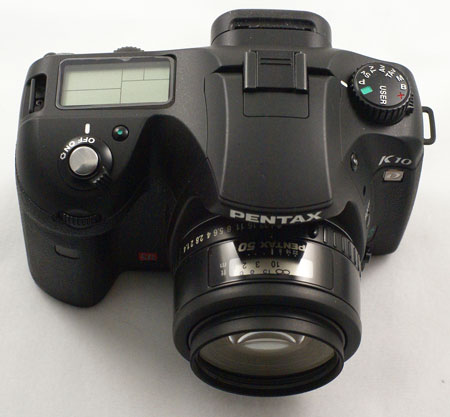
Best Value in the 10 Megapixel category is clearly the Pentax K10D. The Pentax designed anti-shake system is said to be capable of up to four stops of improved low-light performance. In addition the Pentax integrates auto sensor cleaning. It is also the only SLR in our tests with pro level sealing that makes the camera water and dust resistant. The K10D is a solid piece of engineering that redefines the norm in the $1000 digital SLR category. We suspect the Pentax will encourage other new designs that will bring Pro level construction and features to lower Digital SLR price points. The Nikon D80 is also an exceptional 10 megapixel offering that is only marred by the fact that Nikon remains the only major camera maker that refuses to incorporate any means of auto sensor cleaning. We also prefer the body-integral anti-shake built into the Pentax K10D that will work with any lens mounted to the expensive lens-based anti-shake used on specialty lenses by Nikon and Canon. Pentax has even added provisions that allow anti-shake to work with any of the 25 million older K-mount lenses that have been manufactured over the years.
The new lineup of Pentax digital cameras is very impressive, and Pentax finally seems to have it right after several generations of near misses. Pentax is also offering some of the most innovative and interesting lenses currently available in digital photography. This includes the rebirth of the extremely thin "pancake" lenses like the 40mm f2.8 and 21mm f3.2, as well as new fast primes like the 31mm f1.8, 43 f1.9 and the 77mm f1.8, and innovative zooms like the zoom fish-eye 10-17mm f3.5-4.5.
That does not minimize the fact that Canon and Nikon remain the safe choices in all categories. Pentax has a long and illustrious history in innovative camera and lens design, but they are still a small company compared to Canon, Nikon, and now Sony. Perhaps the recently announced merger of Pentax and Hoya - who is the one of the largest "glass blank" suppliers to the camera industry - will provide even more resources for Pentax to continue the kind of innovation we are seeing in their current Digital SLR offerings.







